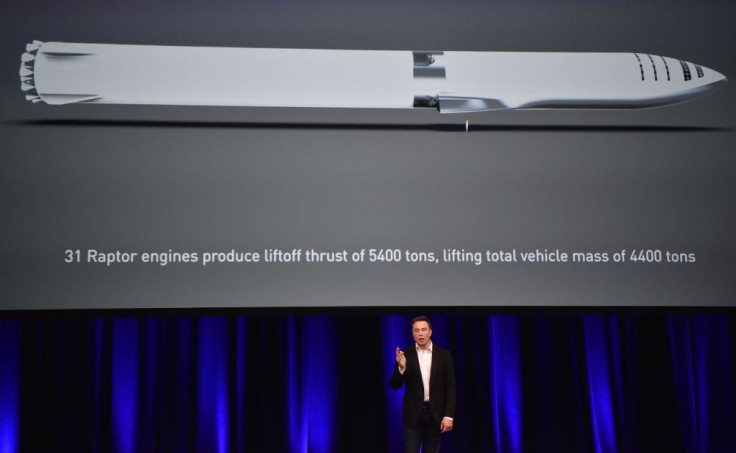SpaceX BFR: Everything We Know About Elon Musk's Massive Interplanetary Spaceship

Elon Musk’s Mars colonization plans are no stranger to any of us. The billionaire wants to make mankind a multi-planetary species and has already made big strides toward achieving that goal. SpaceX recently launched Falcon Heavy rocket and is moving toward building BFR, a colossal spaceship designed to ferry people and cargo between Earth and Mars.
The BFR, presumably an acronym for "Big Falcon Rocket," will be a 348-foot-long reusable space vehicle which will replace Falcon 9, Falcon Heavy and Dragon after coming into operation. It will include a 157-foot-long payload module capable of carrying about 150-tonnes of load and an even taller booster which is expected to produce a whopping 11 million pounds of thrust at lift-off.
Using 31 methane-powered Raptor engines, BFR would serve a variety of markets, including point-to-point travel anywhere on Earth, but from the perspective of Mars, the spaceship will have all necessary facilities to keep humans comforted. As Musk said at a conference last year, the payload module of the vehicle will have large common areas and as many as 40 crew cabins, each capable of accommodating two to three individuals, with a galley and solar shelter to keep the spacefarers safe on their way to the Red Planet. Just behind the payload module, there will be two propellant tanks, which will hold fuel and oxygen.
Mission to Mars
First, two BFRs will take cargo to the red planet in 2022 and wait for the next mission which would see four vehicles, two with crew and remaining with cargo, launch and land on the planet to start building habitats and colonizing the Martian surface.
As of now, the tentative timeline for this mission is set for 2024 but that could change considering how BFR’s development progresses over the coming few years. It is important to note SpaceX has to give special attention on a few key things.
First, the company has to ensure effective transition between subsonic, supersonic and hypersonic speeds as the vehicle will enter an unexperienced Martian atmosphere to land on the planet’s surface. The next part comes later but is equally important — BFR should be able to return and make a safe journey back home after completing its mission, something that would depend on the condition of its heat shield after entry.
Just last month, Musk said at a conference that BFR’s construction was making good progress and they expect to conduct first short-hop test flights on Earth sometime next year. These would be short up and down flights to see the functioning of the initial prototype, Geekwire reported.
“Sometimes my timelines are a little … optimistic,” he added. “I’m trying to recalibrate to some degree here”.
He has even showcased the humongous "main body tool" of the spaceship in a recent Instagram post.
© Copyright IBTimes 2024. All rights reserved.




















